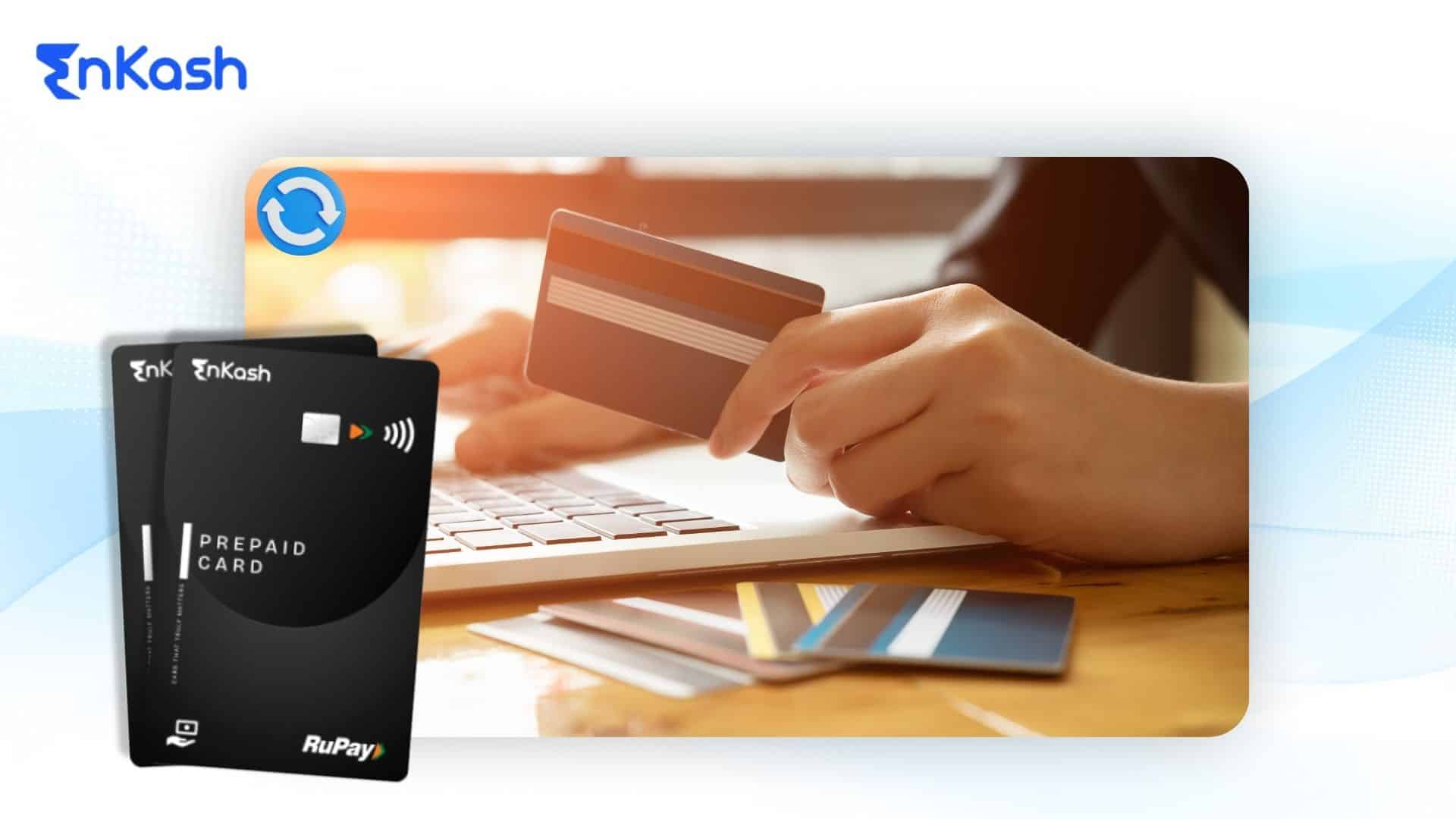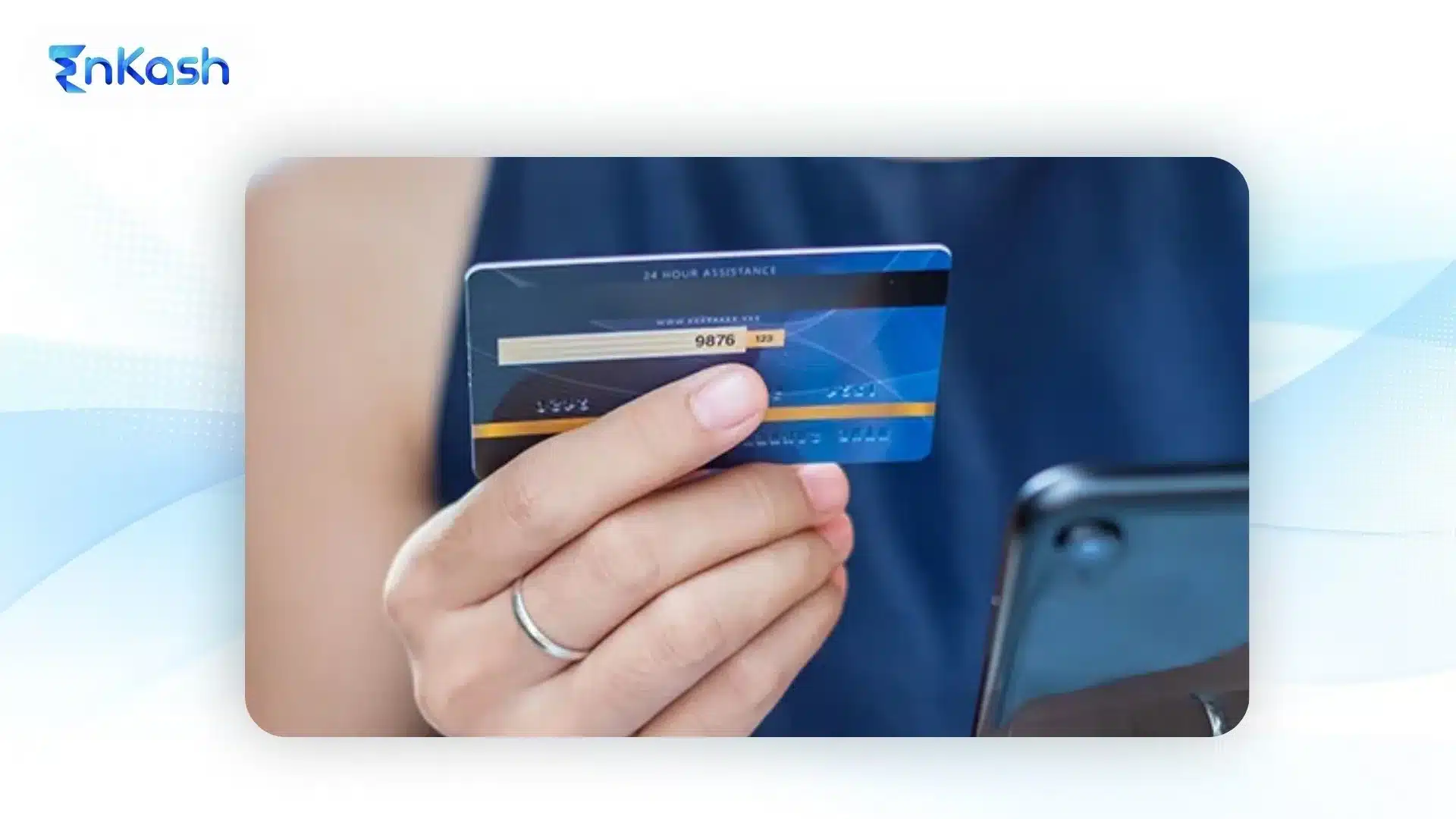Tracking business expenses today is no longer as simple as collecting bills or filing invoices. As teams grow and spending becomes distributed, companies are looking for better ways to manage how money moves inside the business. Traditional methods like shared corporate cards, petty cash drawers, or reimbursement forms are not equipped to keep up with fast-paced operations. They lack real-time control, cause confusion, and often lead to delays or overspending. This is where reloadable prepaid cards are starting to change how finance teams operate. With built-in controls and digital visibility, these cards allow businesses to allocate, monitor, and limit spending before it happens. Whether it is marketing expenses, employee travel, vendor payment, or even office supplies, prepaid systems offer a structured way to manage costs without slowing things down.
The real value lies in how these reloadable cards for business combine flexibility with oversight. Finance teams no longer need to chase receipts or manually check transactions. Instead, everything is logged, limited, and accounted for in real time.
This blog takes a closer look at how prepaid card systems are transforming expense control. We will explore the types of cards available, compare their features, and help you decide which model suits your company’s spending structure.
What Are Prepaid Business Cards and How Do They Work?
Prepaid business cards are payment tools that allow companies to load money in advance and hand out spending power with fixed controls. These cards work like regular payment cards, but the main difference is that the amount is limited to what is already loaded. There is no credit involved. This makes them predictable and easier to manage.
There are two main types: reloadable cards and non-reloadable cards. As the name suggests, reloadable cards can be topped up with funds multiple times. They are useful for employees or departments that make frequent purchases. In contrast, non-reloadable cards are loaded once and used until the amount runs out. These are often given for one-time spending, short-term projects, or specific events.
You can choose between physical and virtual versions. Physical cards are useful for offline purchases like fuel or local travel. Virtual cards work well for online platforms, subscriptions, or digital campaigns. Both options come with tracking and control tools that let businesses monitor usage instantly.
Many companies issue reloadable prepaid cards through verified platforms. These platforms allow card creation, fund transfers, setting limits, and reviewing expenses all from one dashboard. The process is fully managed by the finance team, which means there is no dependency on reimbursements or shared cards.
Some platforms waive issuance fees for reloadable cards if businesses meet certain usage thresholds, though other charges may still apply. These solutions are gaining popularity for their ease of use and flexibility.
If you are thinking about what are reloadable cards or how they fit into business needs, the answer is straightforward. They give companies the power to decide how, when, and where money gets spent, without losing control.
Why Traditional Expense Management Fails in Today’s Companies
Managing business expenses using outdated methods often creates more problems than it solves. Paper bills, shared cards, and manual claims can slow things down and lead to confusion. These systems were built for smaller teams and slower workflows. In today’s fast-moving setups, they often cause gaps in control, tracking, and timing.
Reimbursements are a common example. Employees spend from their own pockets and wait for approvals. This leads to delays and frustration. Finance teams then spend hours checking each bill and matching it with the right budget. It becomes a repetitive task that eats into productive time.
Shared corporate cards are another problem. With multiple users accessing the same card, it becomes hard to know who spent what. Misuse, missed entries, or overspending are real risks. When things go wrong, there is no way to fix it quickly. Tracking down missing receipts or explaining unmatched charges adds pressure to the finance department.
Petty cash systems are no better. They involve physical cash, manual registers, and constant monitoring. There is always a chance of error, and audits become complicated.
This is where reloadable cards for business provide a clear advantage. Instead of following the expense, companies can now set limits before the money is spent. This shift in control changes how expenses are handled. Every transaction is visible, recorded, and tied to a specific person or purpose.
The shift from traditional models to reloadable prepaid cards helps businesses reduce waste, prevent overspending, and simplify the entire process. When finance teams have better tools, they spend less time chasing data and more time making decisions that matter.
Read more: Automating Expense Management with Corporate Cards
Key Benefits of Prepaid Cards for Expense Control
Using reloadable prepaid cards is not just a safer way to spend, it is also a smarter way to manage money across teams. These cards are built to give companies more control, more clarity, and less back-and-forth during month-end closings. Following are the key benefits businesses can count on:
Real-time tracking makes spending transparent
Every time a reloadable card is used, the transaction is recorded instantly. Finance teams do not need to wait till the end of the month to see where the money went. Dashboards show live updates, helping managers track budgets without digging through files.
Spend limits are easy to set and manage
You can control how much can be spent and where. For example, a card used for travel can be locked for hotel and fuel only. You can also set a daily, weekly, or project-based cap. This keeps budgets tight and prevents misuse.
Admin workload drops across teams
Manual expense reports and scanned bills are replaced by digital logs. Everything is tagged, sorted, and easy to reconcile. With reloadable prepaid cards for business, closing accounts becomes faster and more efficient.
Built-in accountability improves discipline
Every card is assigned to a user. That means every swipe is tied to a person or a task. Employees know their limits and stick to budgets, so managers don’t have to micromanage or approve every purchase.
Cards reduce fraud and financial risk
Reloadable cards provide access only to pre-funded amounts stored in a secure issuer-managed wallet, not on the physical card. If a card is lost or stolen, the financial risk is minimized, especially when paired with instant freeze options. You can freeze the card instantly. Virtual cards are even safer for online use.
Prepaid cards support role-based spending policies
Senior staff can get wider access. New employees or contract workers can be given tighter controls. With tools to assign usage by role, you can build a clear spending structure.
With all these advantages, reloadable cards in India are helping businesses take back control without adding new layers of complexity.
Read more: Make Secure Online Payments with Free Virtual Cards
Reloadable vs Non-Reloadable Cards: Which One Fits Your Business
Businesses can choose between reloadable cards and non-reloadable cards, depending on how often money needs to be spent and who is spending it. Each type has its own role and suits different business needs. The right choice depends on the pattern, control, and purpose of the expense.
Here is how both compare in simple terms:
Reloadable cards are built for frequent use
These cards allow funds to be added multiple times. You can keep them active for months or years and top them up as needed. They are perfect for teams or departments that handle regular purchases.
Non-reloadable cards work for one-time expenses
These cards carry a fixed amount. Once the balance runs out, the card cannot be used again. They are ideal for temporary projects, limited tasks, or vendor payments that happen once.
Reloadable prepaid cards help simplify recurring business expenses
From travel to tools, these cards support ongoing needs. They work well for employees who require regular access to funds but still need strict limits.
Non-reloadable cards are good for rewards and disbursements
For bonus payouts, festival gifts, or customer offers, these cards give a clean, one-time solution without the need to track future usage.
The difference between reloadable and non-reloadable cards is about control and timing
Reloadable options give long-term flexibility. Non-reloadable cards offer one-time simplicity. It depends on the task.
Most platforms now offer both options
You can order either type, assign them based on your team structure, and still manage everything from a single dashboard.
For growing companies, starting with reloadable prepaid cards makes sense. You can then add non-reloadable cards where needed, based on project or campaign requirements.
Read more: Virtual Prepaid Cards In India: Types, Usage & Benefits
Supporting Multi-Level Spend Policies with Prepaid Cards
Businesses today need flexible spending systems that can support different roles, levels, and departments. Giving the same access to every employee can lead to confusion or financial mistakes. This is why reloadable prepaid cards are designed to work with custom rules and limits. You can create clear spending paths without adding layers of approval.
Here is how these cards help manage multi-level spending across teams:
- Set individual card limits for every user
Each card can be loaded with a different value. Senior staff can get higher limits, while entry-level users can have restricted access. This way, every card follows a defined budget. - Assign cards based on role or department
You can issue cards to marketing, sales, support, or operations teams and fix where and how they are used. For example, a card for the sales team can be active for travel and client lunches, but blocked for online ads. - Track usage per team, not just per card
Dashboards show how much each group is spending. This helps in reviewing budgets by department instead of looking at each card separately. - Create cards for vendors or short-term staff
Freelancers or vendors can be issued non-reloadable cards with fixed limits. These cards expire after use and do not affect long-term financial plans. - Make approvals automatic by setting controls early
With pre-defined limits and usage rules, managers do not have to review every transaction. This saves time and builds faster processes. - Use digital logs to review team-level spending
Every swipe is recorded. You can review spending across projects or time periods and make decisions based on actual data.
With reloadable cards online, companies can build clear, layered policies that work for everyone, without losing control or adding delays.
Read more: Types of Prepaid Cards for Business: Payroll, Travel, Procurement & More
Prepaid Cards in Real Business Use
Companies across sectors are using reloadable cards to handle different types of spending. These cards are not limited to travel or meals; they support a wide range of real business needs. From quick payments to long-term vendor relationships, prepaid systems make every transaction simpler, faster, and easier to track.
Some of the practical ways businesses are using prepaid cards today are:
- Manage employee travel with fixed budgets
Cards are issued before a trip with preloaded funds. This removes the need for reimbursements. With a reloadable prepaid card, you can add funds mid-trip if needed or freeze the card when the trip ends. - Handle vendor payments with better visibility
Instead of writing cheques or doing bank transfers for every small vendor, businesses now load reloadable cards with a set amount. Vendors are paid quickly, and each transaction is recorded. - Pay for digital ads and subscriptions using virtual cards
Create cards only for ad campaigns or paid tools. This protects the main account and helps maintain strict budget control. Virtual reloadable cards are widely used for marketing expenses. - Issue cards for temporary staff or project workers
Short-term workers can be given non-reloadable cards with set amounts. Once the work is complete, the cards are closed. There is no need for permanent accounts. - Distribute rewards and bonuses without cash
For internal contests, festive gifts, or loyalty payouts, non-reloadable cards work better than envelopes or vouchers. They carry a clean digital trail and can be customised for each purpose. - Support purchase-based workflows without delay
Some teams need funds to act fast. Using reloadable cards for business, you can avoid delays, cut paperwork, and speed up decision-making.
Across these use cases, reloadable prepaid cards in India are helping companies bring structure to everyday spending.
Implementing a Prepaid Card System: What to Know
Rolling out reloadable cards in a business is not just about ordering plastic or virtual cards. It involves a clear plan, the right tools, and internal clarity. When done right, this shift can bring lasting control and transparency to all your expenses.
Key points to keep in mind before you start:
- Choose a reliable platform that meets your business needs
Look for providers who offer full control over card limits, tracking, and spending rules. Platforms that allow both reloadable prepaid cards and non-reloadable cards give you more flexibility. - Check if the platform supports team-level usage
You should be able to issue cards for departments, roles, or locations. A system that lets you build separate rules for each group can save time in the long run. - Confirm how to reload prepaid cards easily
The process of topping up should be fast, safe, and traceable. The best tools let you do a card reload instantly from your main dashboard without extra paperwork. - Review integration with your accounting tools
Choose a solution that integrates with your accounting software or ERP system. API-enabled syncing with ledgers or expense tools helps avoid manual errors. - Train your team before rollout
Staff should know how to use the cards, check balances, and follow limits. Keep the rules simple and share them clearly. - Understand legal and policy compliance
Each card must adhere to RBI-mandated KYC norms and spending limits applicable to prepaid payment instruments (PPIs). Providers of reloadable cards in India take care of most of this, but your finance team must review it as well. - Start small, test, then scale
Begin with a few users or one department. Use feedback to fix gaps. Once the system works, roll it out across your teams.
Conclusion
Modern business spending requires speed, structure, and clarity. With reloadable prepaid cards, companies can stay in control without slowing down daily operations. These cards give teams access to funds with built-in rules that reduce risk and improve accuracy. From fixed project budgets to one-time rewards, the system adapts to every need.
As more companies move toward digital-first finance tools, the use of Mastercard reloadable cards, virtual solutions, and team-based expense tracking will only grow. If your business needs more control without more complications, this is a smart place to start.
FAQs
1. Can reloadable cards be used internationally for business travel?
Yes, some platforms offer Visa reloadable cards or Mastercard reloadable cards that work globally. These are ideal for international business travel, as they provide currency flexibility and help you set exact limits before the trip, making spending safer and easier to track.
2. Is there a limit to how many times a reloadable card can be recharged?
Most reloadable prepaid cards have no fixed limit on reload frequency, but daily or monthly caps may apply depending on the provider. Always check card terms before use, especially if large or frequent prepaid cards reload cycles are expected.
3. Are reloadable cards secure for online purchases?
Yes. Many businesses prefer reloadable cards online for digital tools, advertising platforms, and subscription services. Virtual versions add an extra layer of security because they isolate each transaction and are not linked to a company’s main bank account.
4. Can I assign reloadable cards to freelancers or temporary staff?
Absolutely. You can issue non-reloadable cards with fixed values to freelancers or temporary team members. This avoids manual reimbursements and keeps one-time expenses separate from long-term budgets.
5. What types of expenses can be covered using reloadable cards?
Reloadable cards for business are flexible. You can use them for travel, meals, software tools, vendor payments, or office supplies. Most providers allow you to assign spending categories and usage rules for each card.
6. How fast can funds be added to a reloadable card?
Most platforms allow real-time card reload through a central dashboard. Once funds are added, the card becomes active immediately, which is useful during urgent or last-minute spending needs.
7. What happens if a reloadable card is lost or stolen?
If a reloadable prepaid card is lost, administrators can freeze or block it instantly through the platform dashboard. This stops any misuse. In most cases, the remaining balance can be transferred to a new card.
8. Are there any hidden charges for reloadable cards?
Some providers may charge for issuance, reloads, or inactivity. However, many offer free reloadable cards for businesses with regular usage. Always read the fee structure before choosing a vendor to avoid surprises.
9. How do I choose the best reloadable prepaid cards for my company?
Look for the best reloadable prepaid cards that offer ease of use, strong tracking tools, flexible limits, and fast support. Check if they integrate with your accounting tools and support both reloadable and non-reloadable cards.
10. Can reloadable cards be used for employee incentives or bonuses?
Yes. Many companies use non-reloadable cards to issue performance bonuses or festival rewards. These cards provide a clean, branded way to offer incentives without using cash or vouchers, and each card can be tracked if needed.








